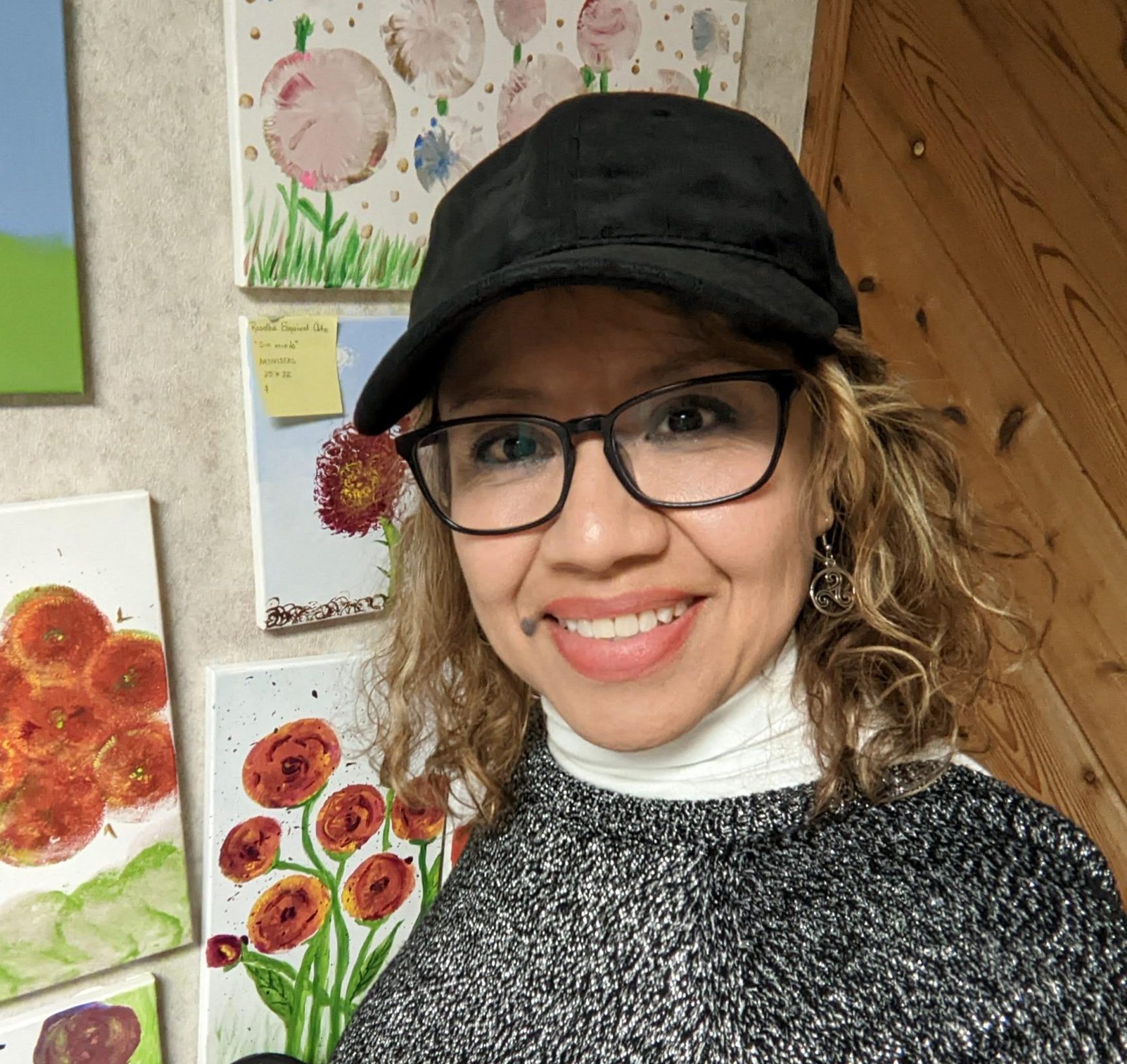
por Leticia Roa Nixon
Click here for English version
Los barrios chinos en los Estados Unidos y Canadá ha sido reducidos drásticamente por proyectos urbanos desde hace mucho tiempo. La gentrificación y el desarrollo urbano en Washington, San Luis y en otras ciudades son prueba de la reducción de estas comunidades.
Este año, el concejo municipal de Filadelfia tendrá que decidir si aprueba la edificación del estadio del equipo de baloncesto local, los 76ers en la calle Market esquina con la 11, a una cuadra del barrio chino. Este plan fue propuesto en el verano de 2022 con optimismo por parte de la corporación 76 Devcorp afirmando que será una inversión de 1.3 billlones de dólares. De aprobarse este proyecto, la inauguración planeada del estadio sería en 2031. Los Sixers son inquilinos del Centro Wells Fargo, una instalación que comparten con Flyers ,el equipo de hockey sobre hielo local, “Flyers”.
Sus argumentos principales para mudarse al centro de la ciudad son porque quieren tener su propio horario de uso del lugar y porque necesitan un estadio de vanguardia para que el equipo sea competitivo en la Asociación Nacional de Beisbol.

El atractivo que enfatizan es la generación de empleos, ingresos fiscales y la revitalización de esas cuadras que están ocupadas actualmente por el centro comercial Fashion District.
Sin embargo, los residentes y comerciantes del barrio chino se oponen de manera abrumadora al estadio, pues podría destruir el vecindario de 150 años de existencia, por el congestionamiento vial, las prediales más elevadas y el aumento de las rentas. La líder del primer precinto, Kathleen Melville ha dicho que la ciudad no necesita un estadio que estaría vacío la mayoría de los días de año cuando hay cantidad de proyectos que necesitan llevarse a cabo en Filadelfia, como son la construcción de vivienda asequible y nuevas escuelas.

Por su parte, la comunidad afectada anunció el 9 de enero de 2023 la formación de la “Coalición del Barrio Chino que se Opone al Estadio” integrada por más de 40 grupos comunitarios de esa zona histórica, así como de organizaciones comerciales y otras sin fines de lucro. La Corporación de Desarrollo del Barrio Chino de Filadlfia se opuso formalmente a ese proyecto en marzo de 2023.
Los estadios han tenido un efecto de gentrificación en las comunidades de color de bajos eingresos en el país como son Los Ángeles, Seattle, la ciudad de Nueva York y Atlanta. El Estadio Capital One en Washington, DC contribuyó al colapso del barrio chino. “No permitiremos que el barrio chino de Filadelifa sea una más de esas historias trágicas”, afirmó la corporación, la cual realizaó una encuesta a más de 230 personasl. Los resultados indicaronn que el 93% de los comerciantes, el 94% de los residentes y el 95% de los visitantes se oponen al estadio de los “Sixers”.
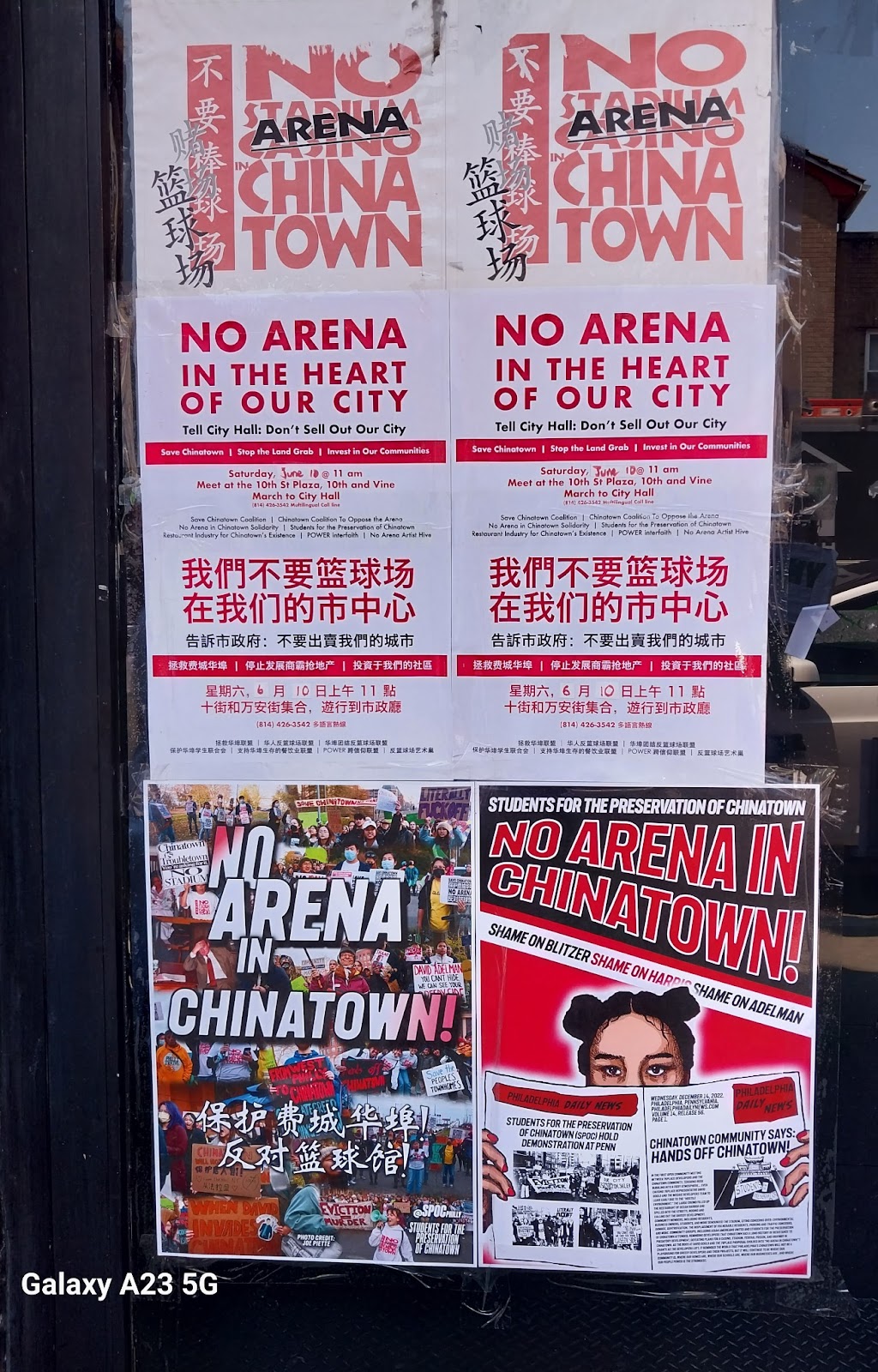
El año pasado se intensificó la defensa de esta área citadina. En abril se entregaron miles de firmas a los miembros del concejo muniicpal de personas que serían impactadas por esa edificación. Entre otras actividades, el 10 de junio hubo una marcha multiracial que partió de la esquina de la calle Vine y 10 hasta llegar al ayuntamiento de Filadelfia.
Aunada a esa diversidad racial que se ha solidarizado con la lucha de la comunidad asiática por defender su barrio, existe la diversidad religiosa con un aliado poderoso, POWER Interfaith, organización sin fines de lucro que cree que la fe puede unirnos más que dividirnos y que las variadas tradiciones de fe exhortan a sus miembros a actuar para hacer las comunidades y la nación un mejor lugar donde vivir.
Así, el 17 de diciembre en colaboración con la iglesia Mother Bethel AME , se reunieron más de 150 personas de fe, clero y residentes del distrito 1 para discutir el impacto de dicho estado haciendo preguntas al demócrata Mark Squilla y tratar de obtener un compromiso de este funcionario público.
Como político más que servidor público, evadió las preguntas más importantes, divagó y no se comprometió a apoyar un 100% a la coalición opositora al proyecto corporativo 76Devcorp.
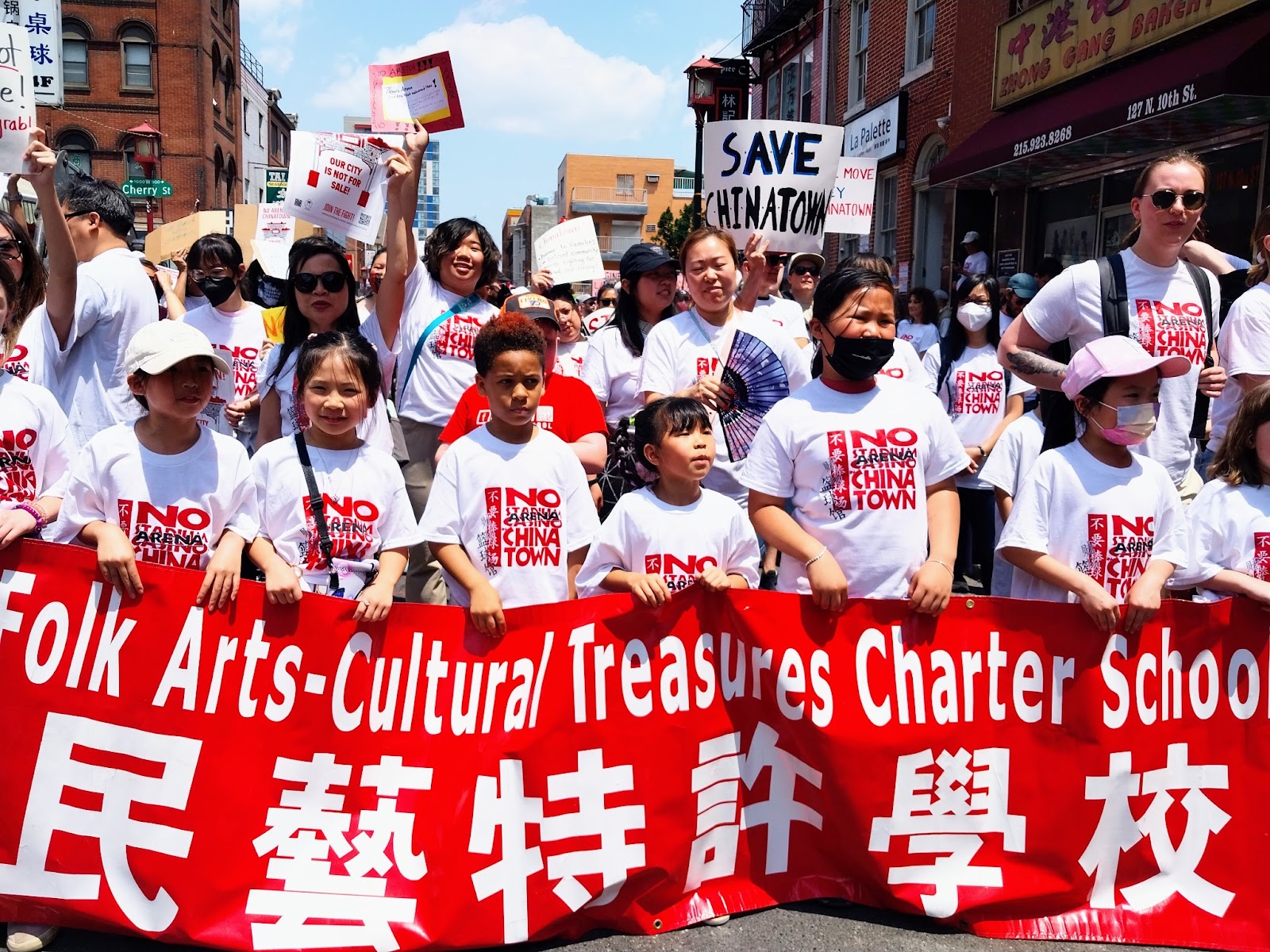
El 25 de enero de 2024, cuando se realizó la primera reunión del concejo municipal con un nuevo presidente, Kenyatta Johnson y bajo la nueva administración de Cherelle Parker, la primera alcaldesa de Filadelfia, la coalición “Salvemos al barrio chino” organizó una conferencia de prensa y visitas a las oficinas de varios concejales para pedir su apoyo.
Esta coalición es un grupo multiracial, multigeneracional, interreligioso de más de 245 organizaciones,pequeños negocios, organizaciones comunitarias registradas y congregaciones religiosas dedicadas a la vitalidad de Filadelfia.
El concejal Mark Squilla se desdijo recientemente que no se destinarían fondos públicos para la construcción potencial del estadio del equipo de baloncesto The Philadelphia 76ers en el centro de Filadelfia que incluye al barrio chino. Según la coalición, el servidor público dejó abierta la puerta para que los contribuyentes subsidien el estadio. El mensaje para el concejal Squilla fue claro, “ningún finaciamiento público para el estadio”.
La mexicana Cristina Martinez, chef de South Philly Barbacoa, ganadora del premio James Beard, expresó que ella va al barrio chino para sesiones de acupuntura y remedios medicinales, ya que no tiene seguro médico. “Esta comunidad no solo es esencial para mí, sino para miles de personas en especial inmigrantes como yo que dependen de ella. El barrio chino es un ícono de la cultura y gastronomía asi como un hogar donde muchos inmigrantes viven.Quiero ver que continúe sobreviviendo, por eso estoy en contra de la construcción del estadio.”

Jimmy Low, técnico de la sala de emergencias del centro de traumas nivel 1 en el centro de la ciudad, manifestó que cuando se cierran las calles 10 y 11 por algún evento, se preocupa por la seguridad de sus pacientes.
Por su parte el Rev. Michael Caine, pastor de la iglesia Old First Reformed UCC en el sector histórico y copresidente de la mesa directiva de Power Interfaith precisó que “hay muchas otras cosas que merecen y necesitan financiamiento público y no queremos ni necesitamos fondos públicos destinados para un nuevo estadio.”
A su vez, Xu lin, propietario de un comercio en el barrio chino manifestó que se sintió traicionado por el concejal Squilla “le exhorto a que cumpla sus promesas y proteja al barrio chino, una comunidad vibrante que tiene mucho que ofrecer a la ciudad.”
Por primera vez en la historia de la comunidad asiática de Filadelfia, ha habido una diversidad de aliados que se han unido a la defensa del barrio chino de la ciudad.
English Version:

Diversity in action to oppose the construction of the 76ers stadium
Chinatowns in the United States and Canada have long been drastically reduced by urban projects. Gentrification and urban development in Washington, St. Louis, and other cities are evidence of the shrinking of these communities.
This year, the Philadelphia City Council will have to decide whether to approve the construction of the stadium of the local basketball team, the 76ers, on Market Street and 11th Street, one block from Chinatown. This plan was proposed in the summer of 2022 with optimism by the corporation 76 Devcorp stating that it will be an investment of 1.3 billion dollars. If this project is approved, the planned opening of the stadium will be in 2031. The Sixers are tenants of the Wells Fargo Center, a facility they share with the Flyers, the local ice hockey team, “Flyers.”
Their main arguments for moving downtown are because they want to have their usage schedule and because they need a state-of-the-art stadium for the team to be competitive in the National Baseball Association.

The attraction they emphasize is the generation of jobs, tax revenue, and the revitalization of those blocks that are currently occupied by the Fashion District shopping center.
However, Chinatown residents and merchants overwhelmingly oppose the stadium, which could destroy the 150-year-old neighborhood through traffic congestion, higher property prices, and rising rents. First Precinct Leader Kathleen Melville has said the city does not need a stadium that would be empty most days of the year when there are so many projects that need to be done in Philadelphia, such as building affordable housing and new schools.
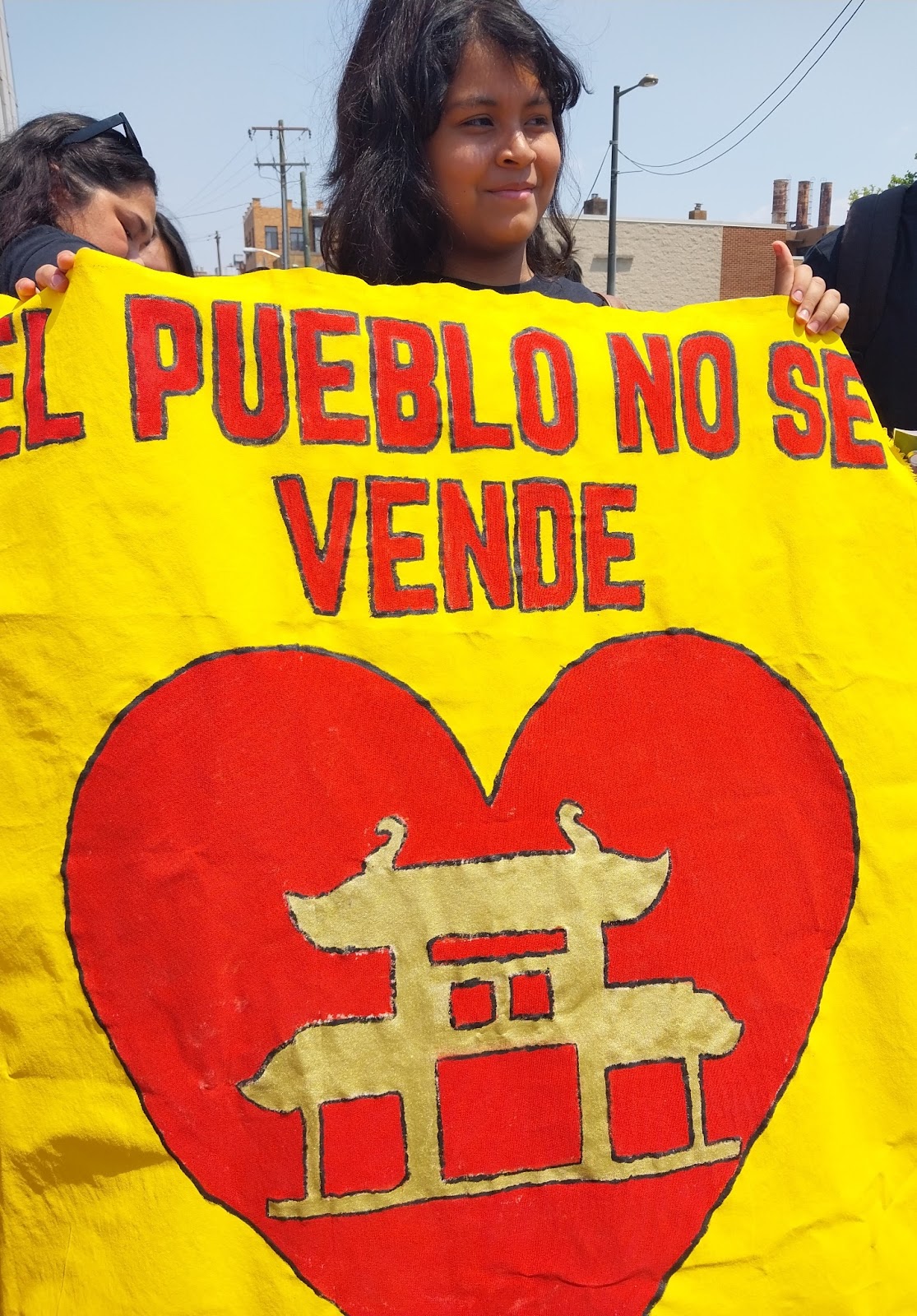
For its part, the affected community announced on January 9, 2023, the formation of the “Chinatown Coalition Opposing the Stadium” made up of more than 40 community groups from that historic area, as well as commercial and other non-profit organizations. profit. The Philadelphia Chinatown Development Corporation formally opposed that project in March 2023.
Stadiums have had a gentrifying effect on low-income communities of color across the country such as Los Angeles, Seattle, New York City, and Atlanta. Capital One Stadium in Washington, DC contributed to the collapse of Chinatown. “We will not allow Philadelphia’s Chinatown to be one more of those tragic stories,” said the corporation, which surveyed more than 230 people. The results indicated that 93% of merchants, 94% of residents, and 95% of visitors oppose the “Sixers” stadium.
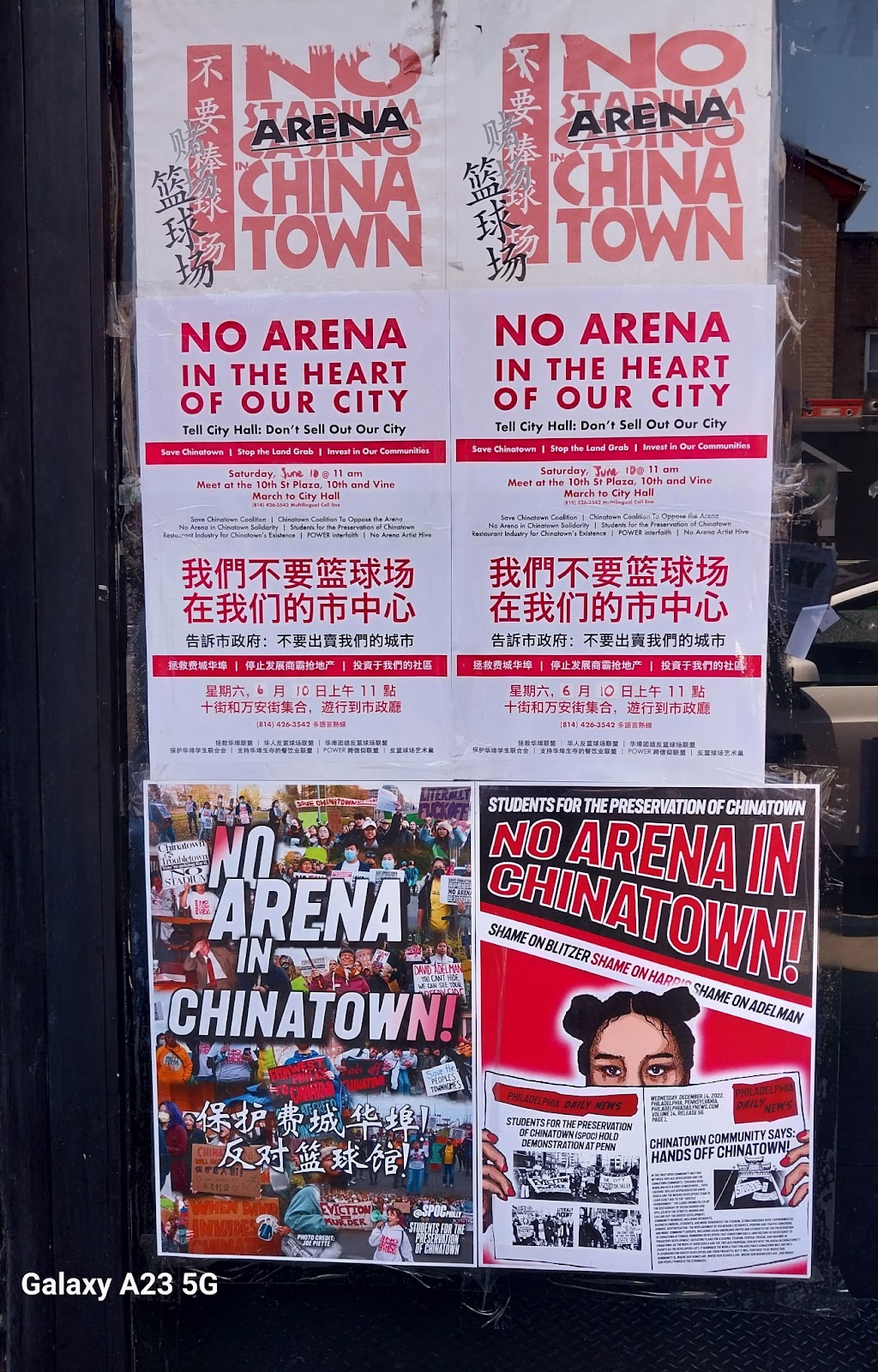
Last year the defense of this city area was intensified. In April, thousands of signatures were delivered to members of the municipal council from people who would be impacted by that building. Among other activities, on June 10 there was a multiracial march that started from the corner of Vine and 10th Streets to Philadelphia City Hall.
In addition to this racial diversity that has expressed solidarity with the Asian community’s struggle to defend their neighborhood, there is religious diversity with a powerful ally, POWER Interfaith, a non-profit organization that believes that faith can unite us more than divide us and that The various faith traditions call on their members to act to make communities and the nation a better place to live.
Thus, on December 17, in collaboration with Mother Bethel AME Church, more than 150 people of faith, clergy and residents of District 1 met to discuss the impact of said state by asking questions of Democrat Mark Squilla and trying to obtain a commitment from this public official.
As a politician rather than a public servant, he evaded the most important questions, digressed, and did not commit to 100% support for the coalition opposing the 76Devcorp corporate project.
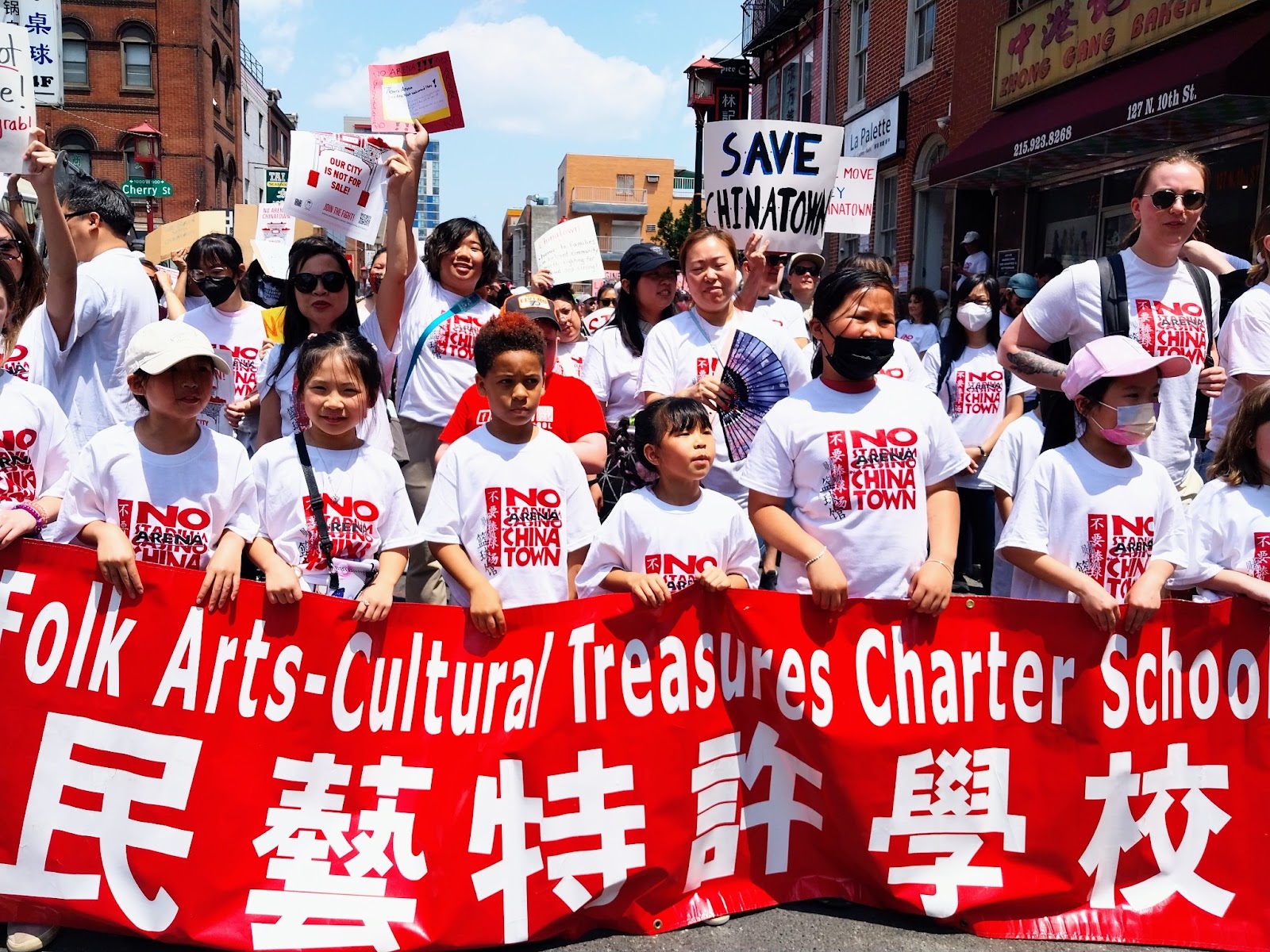
On January 25, 2024, when the first city council meeting was held under a new president, Kenyatta Johnson, and under the new administration of Cherelle Parker, Philadelphia’s first female mayor, the Save Chinatown coalition hosted a conference press and visits to the offices of several councilors to ask for their support.
This coalition is a multiracial, multigenerational, interfaith group of more than 245 organizations, small businesses, registered community organizations, and religious congregations dedicated to the vitality of Philadelphia.
Councilman Mark Squilla recently said no public funds would be allocated for the potential construction of The Philadelphia 76ers basketball team’s stadium in downtown Philadelphia including Chinatown. According to the coalition, the public servant left the door open for taxpayers to subsidize the stadium. The message to Councilman Squilla was clear, “no public financing for the stadium.”

Mexican Cristina Martinez, chef at South Philly Barbacoa, winner of the James Beard Award, said that she goes to Chinatown for acupuncture sessions and medicinal remedies since she does not have health insurance. “This community is not only essential for me, but for thousands of people, especially immigrants like me, who depend on it. “Chinatown is an icon of culture and gastronomy as well as a home where many immigrants live. I want to see it continue to survive, which is why I am against the construction of the stadium.”

Jimmy Low, an emergency room technician at the Level 1 trauma center downtown, said that when 10th and 11th streets are closed for an event, he worries about the safety of his patients.
For his part, Rev. Michael Caine, pastor of the Old First Reformed UCC church in the historic sector and co-president of the board of directors of Power Interfaith, stated that “there are many other things that deserve and need public financing and we do not want or need public funds. destined for a new stadium.”
In turn, Xu Lin, a business owner in Chinatown, stated that he felt betrayed by Councilman Squilla, “I urge him to keep his promises and protect Chinatown, a vibrant community that has much to offer the city.”
For the first time in the history of Philadelphia’s Asian community, there has been a diversity of allies joining the defense of the city’s Chinatown.
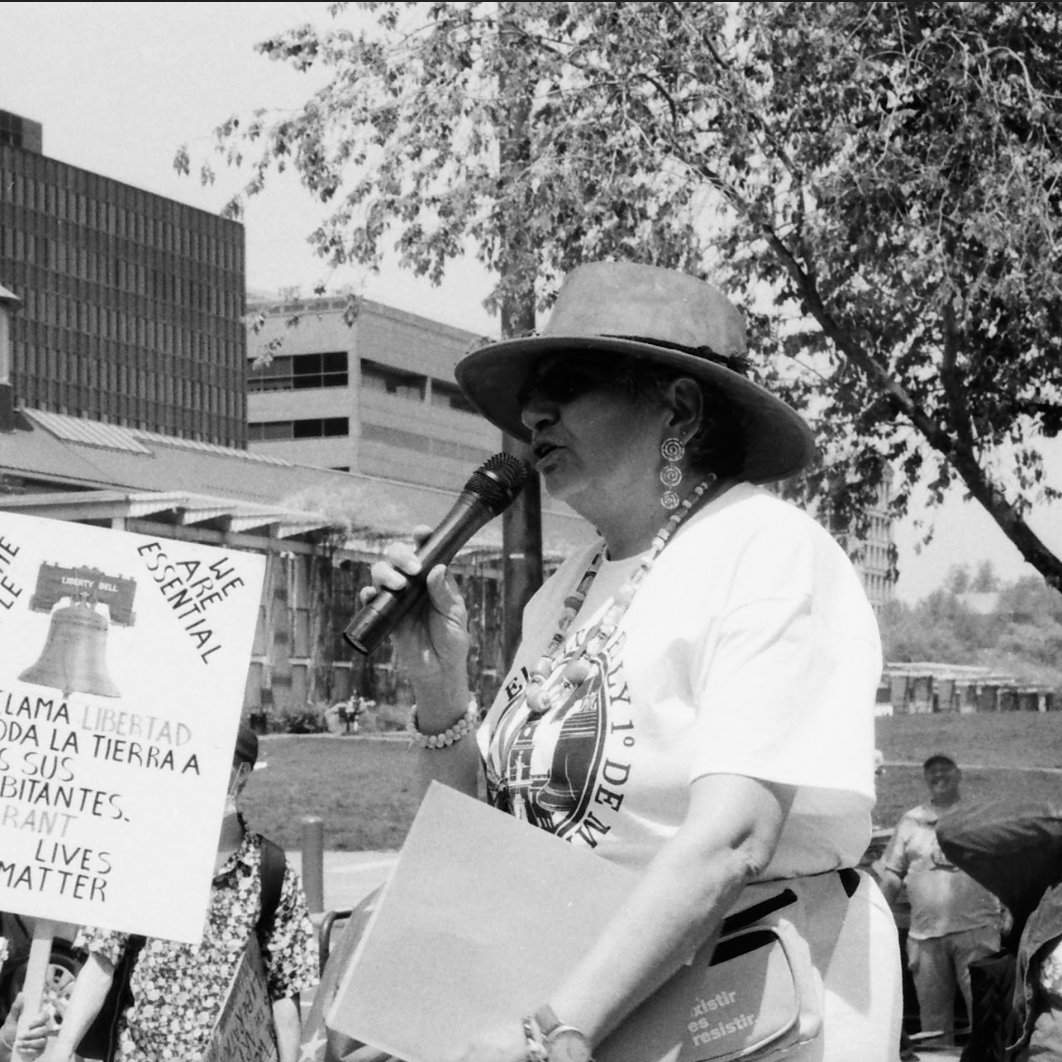
Leticia Roa Nixon
Leticia Nixon, born in Mexico City, studied communications at the Universidad Iberoamericana. Since 1992 she has been dedicated to community journalism in Philadelphia. She is the author of six books and video producer for PhillyCAM. She writes for philatinos.com and lives in Swarthmore, Pa.
Selected Works by Leticia Nixon:
Cuando Los Tejidos Hablan (When Fabrics Speak)
Berenice, La Danzante Azteca (Berenice, The Aztec Dancer)
Huracán Corazón Del Cielo (Huracán, Heart of the Sky)
El Lienzo de Tlapalli (The Tlapalli Canvas)








